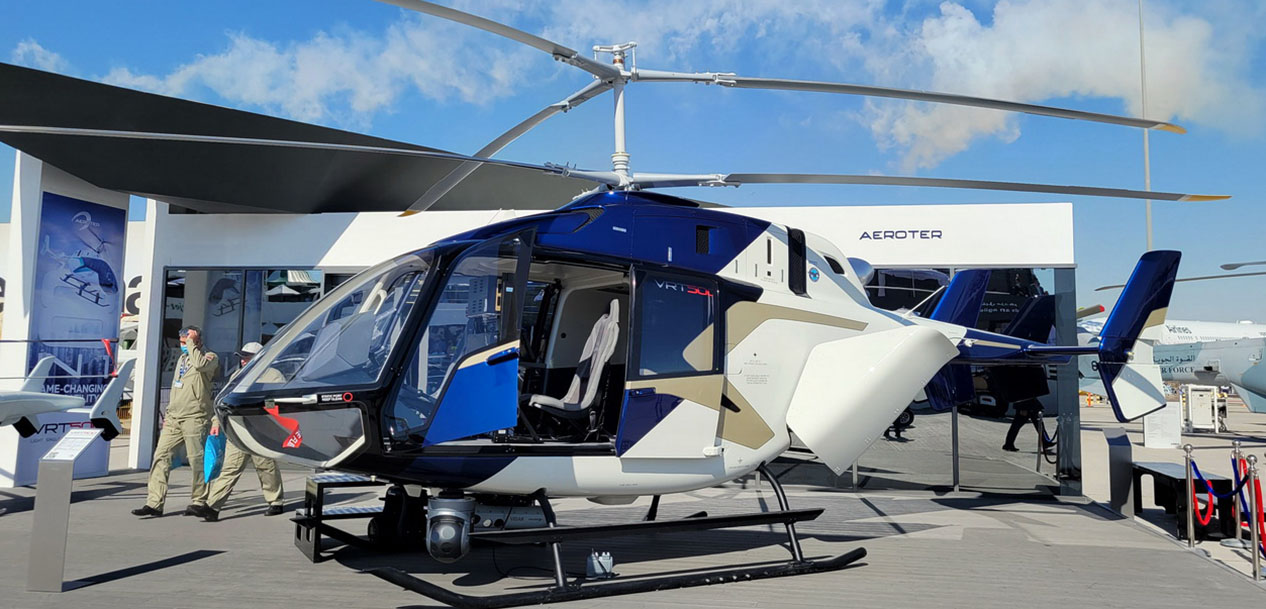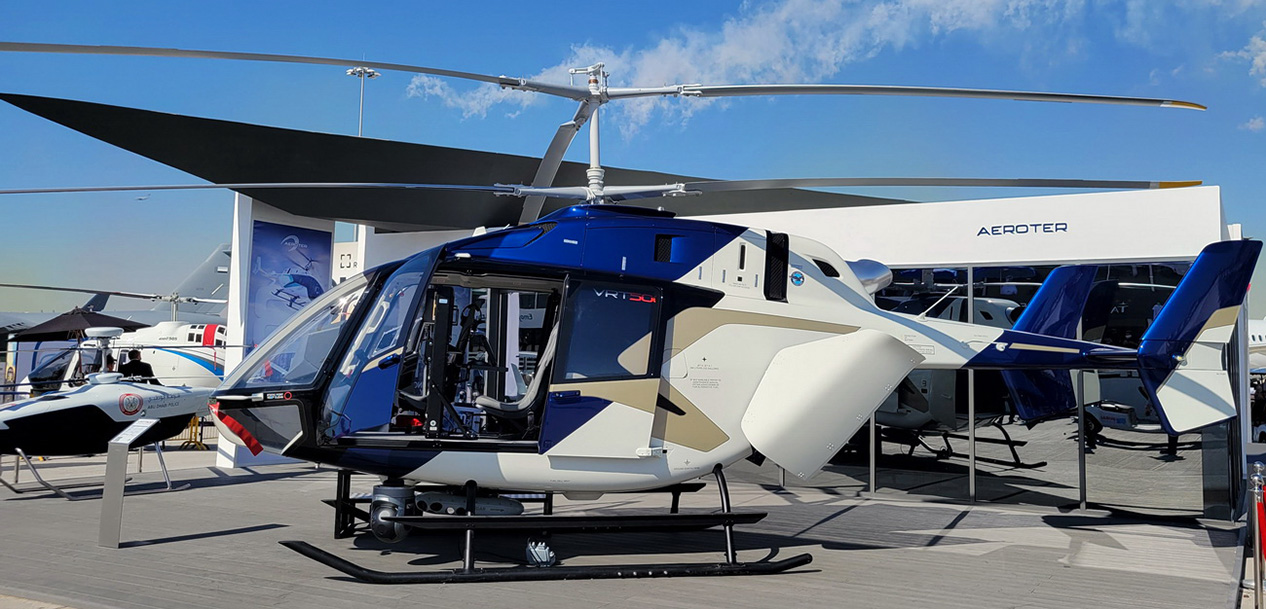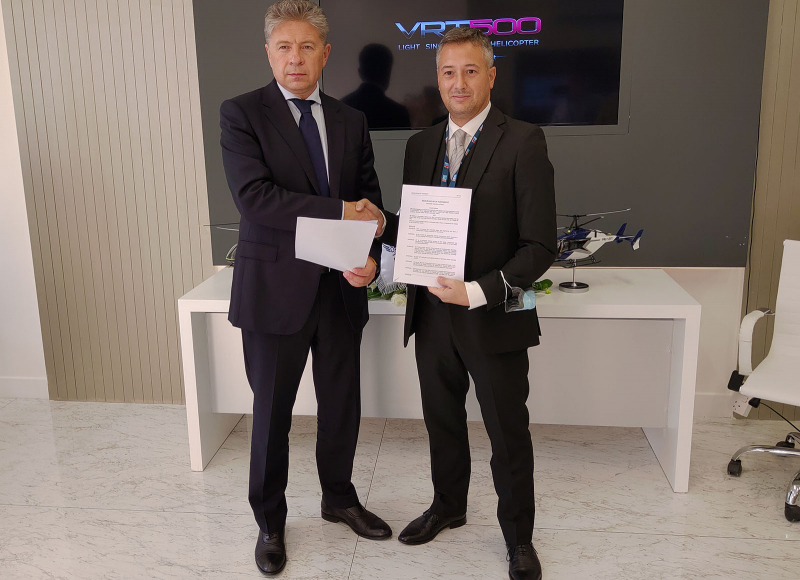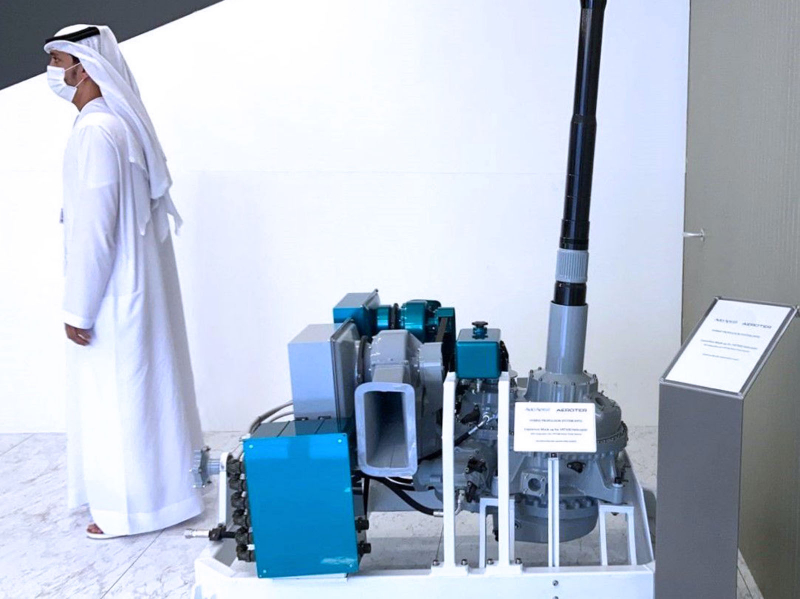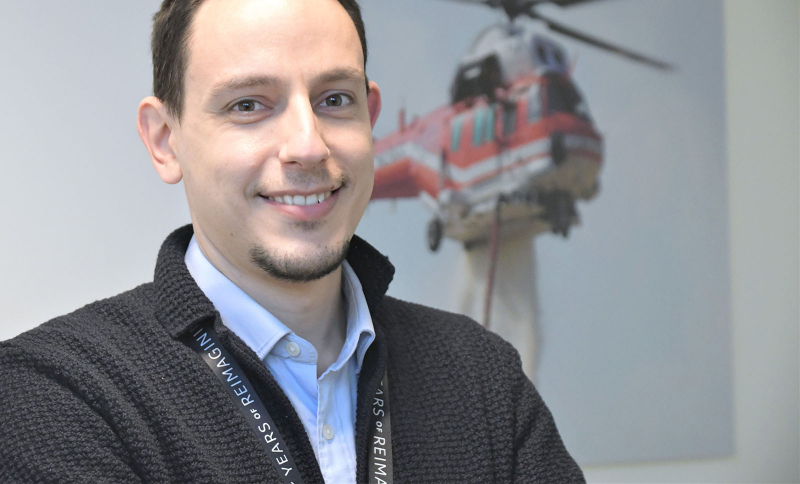Future
Hybrid-electric for Helicopters
An innovative hybrid propulsion system, especially designed for the new VRT500 single-engine light helicopter, was on display at the latest Dubai Air Show.
Dec 2021
During the recent Middle Eastern tradeshow dedicated to the aviation sector - the Dubai Air Show - the emphasis was predominantly on technological solutions aimed at the decarbonization of flights. The announcements and agreements signed by GE Aviation, as well as an exclusive showcase of Avio Aero, set up together with Aeroter and hosted in its exhibit area, were proof of this.
Indeed, at Dubai, the two VRT branded flagship models - the avant-garde single-engine light helicopter VRT500 and the new UAV (remote-controlled drone-like) helicopter VRT300 - stood in front of the entrance to Aeroter's chalet and pavilion. The first one, is yet well-known for its innovative "Italian touch", which, for what concerns propulsion and mechanical technologies, is embedded in the main transmission system designed and produced by Avio Aero.
Whilst inside the pavilion, a new technological evolution was on display, conceived by the successful collaboration with Avio Aero: the first Hybrid Propulsion System (HPS) prototype, designed for the VRT500. It is a safety propulsion system mounted on the central rotor drive which, via digital inputs, automatically activates an electric engine to safely assist the pilot during landing maneuvers in the event of thermal engine failure.
"This system adds to the package of advanced technologies developed by leading companies such as Pratt & Whitney, Thales and Avio Aero," explained Alexander Okhonko, CEO of Aeroter. "It also consolidates the safety of the aircraft, offering more power and resistance to wind gusts, thus improving in-flight control. Not to mention the advantages in terms of cabin space and the exterior lines, which are unique for the segment. Our VRT500 will begin flight testing by mid-2022 and we aim to certify it, together with its HPS, by 2025. Currently, there are no other EASA-certified VTOL (vertical takeoff and landing, ed.) aircraft with a similar solution."
The attention for Aeroter's products and display was pretty high during the airshow. In addition to new interested customers, contracts for over 20 aircraft have already been signed for the VRT500 with its first customers spread across Europe, Russia and Asia. Specifically, 100 new VRT500 helicopters were announced in Dubai with Tawazun, as well as a five-year agreement with Savback for a further 10 and a Memorandum of Agreement with Avio Aero regarding HPS.
The MoA signed in Dubai reaffirms the mutual intention to continue the partnership on this innovative project and define the next steps for technological development and certification together
"The Memorandum signed in Dubai reaffirms the mutual intention to continue the partnership on this innovative project and define the next steps for technological development and certification together", explained Emanuele Di Leo, Helicopter Transmissions Sr. Commercial Manager at Avio Aero. "This is an important milestone, as it allows us to move forward on the path of powertrain system electrification and support customers in their development roadmap for a fully electric helicopter."
The idea of conceiving an innovative propulsion system that would guarantee support to helicopters thanks to an independent electric motor was born among the Avio Aero engineering team dedicated to helicopter transmission systems in 2019. An R&D project was launched together with the team of VR-Technologies (a subsidiary of Aeroter). The goal was to develop a system that would meet the requirements of the new urban air mobility and also those of new operational scenarios for light single-engine helicopters.
These requirements were satisfied thanks to a hybrid-electric architecture presenting a high level of integration between the mechanical and electrical systems, which is optimized for installation on the new VRT500 as well as for the achievement of the desired performance. "We have selected the most innovative technologies available today within the electrical and electronic sector to achieve this level," explained Davide Finamore, HPS System Engineer at Avio Aero.
"At the same time, we are developing the architecture with respect to expected performance, with a power density and safety level that meets the requirements," added Finamore. "The interesting challenge has been to devise a hybrid propulsion system that can meet the requirements of potential future certification regulations, too."
In fact, in addition to the objective of certifying a hybrid system – as said, unprecedented for a helicopter or VTOL (vertical take-off and landing) aircraft - there is more than one opportunity on the horizon. However, it depends on the future technology linked to batteries (i.e. the ability to accumulate energy while containing their bulky volume on the aircraft).
Our HPS could exploit electric propulsion, for example, to reduce emissions and noise in certain maneuvers where more power is normally required from the heat engine; or to increase the performance of the helicopter under certain operating conditions
"Our HPS could exploit electric propulsion, for example, to reduce emissions and noise in certain maneuvers where more power is normally required from the heat engine; or to increase the performance of the helicopter under certain operating conditions where a longer response time of an electric motor is an advantage," concluded Finamore.
Thus, the VRT500's electrification path could open up, when battery technology will allow it, to new applications or configurations such as, for example, an electric helicopter for air-taxi service. A future of air transport sustainability that could be really close.
Images of the VRT500 mockup are courtesy of Aeroter, ph. credits: Mikhail Zherdev, 2021.


